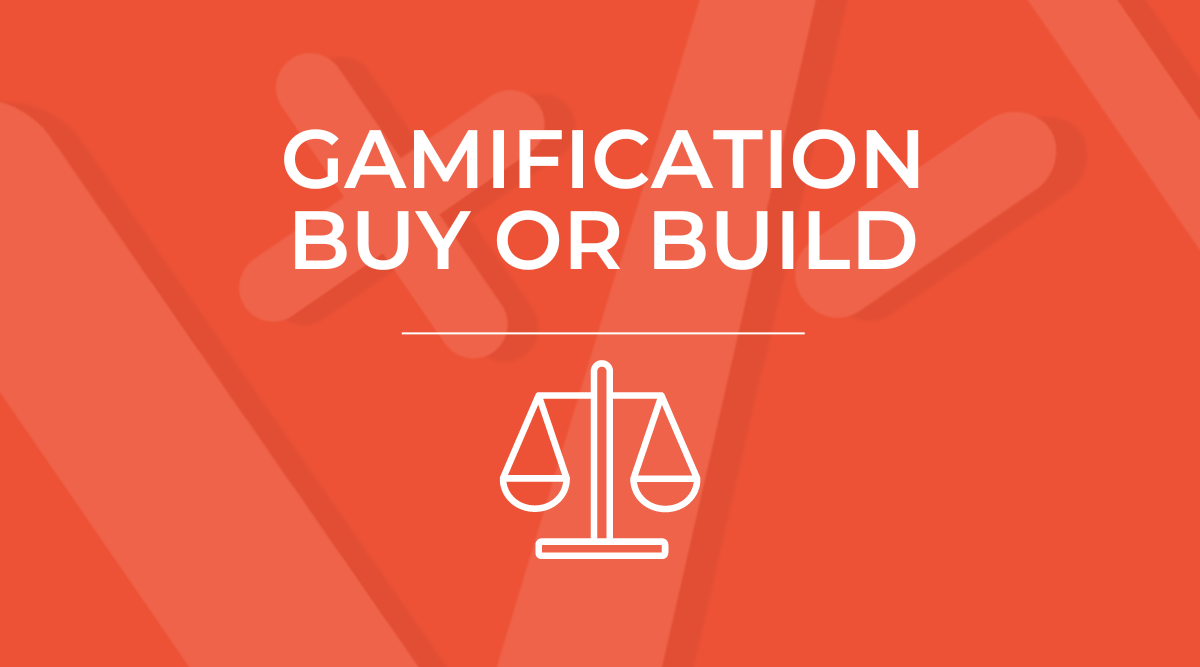Several Factors Impacting Success
The saying “Just because you can doesn’t mean you should” usually refers to something being technically legal, acceptable, et cetera, but possibly not the most ethical or prudent. In the case of gamification, the caveat is more like, “The likelihood of higher revenue and/or better employee engagement is not an invitation to run headlong into the process without due diligence.” Indeed, while the decision to gamify is probably a matter of “when” rather than “if,” there are several factors to consider than can impact your platform’s success, and the health of your company. One of these is whether you should buy that platform or build your own.
For most businesses, making the decision to use gamification is basically a no-brainer. It capitalizes on the psychological and neuroscientific effects of gaming, such as lighting up the pleasure centers of the brain and improving data retention, to increase user enjoyment, motivate them to seek rewards or avoid loss and, hopefully, keep coming back. The result is a positive ripple that can affect every aspect of the company. Employees become more productive because the mundane tasks they usually avoid are more palatable – and even fun; moreover, the prizes and leaderboards for a stellar performance create an environment of both collaboration and healthy competition. The same is true for mandatory (and often snooze-worthy) trainings on new product lines or best practices. On the consumer side, users might be more excited about the rewards (i.e. points after purchasing a certain number of lattes) than the product or service – unless, of course, the product involves learning (i.e. Duolingo’s language courses), in which case the user is motivated by their own achievements. That said, while the benefits of gamification are obvious, the process to getting there may not be.
Money
Money. For many businesses, the decision will be driven by cost. Whether you buy or build a platform, you will be paying, not just for the technology but the knowledge of experts who design and maintain it. The price tag in either case is nothing to sneeze at, with a wide range in the thousands – or tens of thousands – of dollars for designers, project managers, and front- and back-end developers. It is also an ongoing expense, be it in the form of a subscription fee or freelancers you regularly engage to fix glitches and add new features. Again, the first step is research, research, research. Some of the initial questions you might ask include, “Does the projected increase in revenue from gamifying the purchase process justify our expense?” and “Are there are other measures we can/should put in place before gamifying to improve corporate culture?” The concept of gamification has been around, in one form or another, as long as business itself, so you might start out with an “old school” method as a way of collecting data. For example, if a gamification goal is to motivate a lagging sale team, run a contest for the highest quarterly sales in that department, with increasingly attractive rewards for levels of performance. This way, you will see if the boost warrants taking it to a larger, company-wide scale – and perhaps what sort of platform you need.
Time
Time – This is another big one, not only in terms of human hours to create and/or maintain the platform but the timeliness of making the experience available to users. Let’s say you are launching a new product and want to reward consumers for their purchases. The idea of your own platform may be tempting, but if you don’t have staff dedicated to updating it on a regular basis you may constantly find yourself behind the eight ball – and losing fickle consumers who will quickly turn to your competitors. In this case, licensing it from a SaaS company makes more sense because it will enable you to direct your resources to other aspects of marketing, quality assurance, and so on. On the other hand, when you have your own platform, you can build it incrementally according to your own pace and needs as determined by measurable results and user feedback. This may also be the far more economical option, as every change you implement through a licensing company will result in a much larger bill.
Plan Ahead
Given the above factors, you can see how the decision to buy or build is not a simple one, but requires planning, a realistic assessment of your company’s size and position in its market, and a clear vision of where you want to take it the future. Not everyone will be a Facebook or a Walmart – nor does everyone desire to be. That is the beauty of gamification – its principles apply whether you are a multinational conglomerate or a mom-and-pop operation, allowing you to earn more, build communities and brand recognition, and increase employee satisfaction and retention. As for your platform, you want to make it a destination spot that attracts people anywhere on the globe, and keeps them coming back, without breaking your bank.



